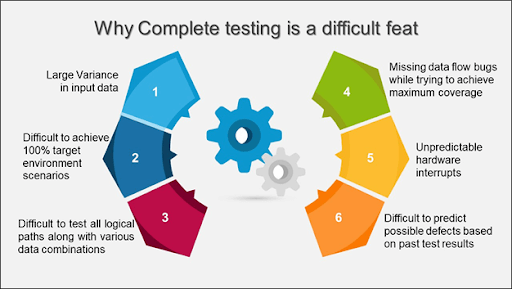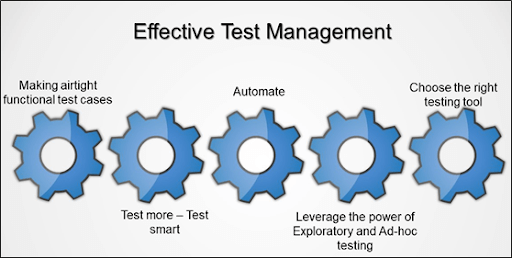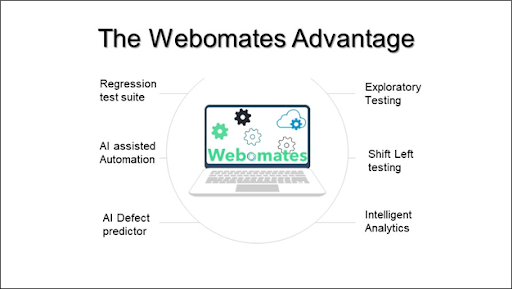Accelerate Success with AI-Powered Test Automation – Smarter, Faster, Flawless
Start free trialComplete testing, aka exhaustive testing, implies that the software has been tested for all possible scenarios and it is 100% defect-free at the time of deployment. But, is it really possible?
Practically speaking, software testing is not really conducted to prove the absence of defects, it essentially detects the presence of defects and aids in their rectification to reduce the risk of failure at the time of use.
Let us explore how absolute testing claims is a fallacy. We can then further delve into possibilities of how to achieve the highest level of quality to match, and also to exceed, the customer expectations.

| Why? | Explanation |
| Large variance in input data | Ideally, the tests should be conducted for both, valid and invalid input data. Considering the fact that a single feature may require multiple inputs, imagine the pool of test data when the input data set is extrapolated to cover both, positive and negative scenarios, for all the input variables. |
| Difficulty in achieving 100% target execution environment scenarios while testing | A software undergoes multiple acid tests in different environments during its lifecycleDevelopment environmentTesting environmentDeployment environmentBest efforts can be made to simulate the conditions that will prevail when the software will be actually used. But, a certain level of unpredictability and uncertainty is always there. |
| Testing all logical paths in conjunction with all possible input combinations is a tough task | Testing all the logical branches, of all the functionalities, with various combinations of valid/invalid data is an extremely time consuming process. It may take a toll on the overall feature development velocity. |
| Coverage based testing may miss data flow related bugs and vice versa | Conducting comprehensive coverage-based testing to test for statements, branches and all the decision flows can leave a gap for data flow related bugs(refer to data related point above). Vice versa is also possible, leading to few undetected defects to escape the net. |
| Unpredictable hardware interrupts | Hardware interrupts are unpredictable. Every time an interrupt signal occurs, the main program saves the data, jumps to the interrupt handler routine, returns to the point of interrupt, recovers the data, and continues further processing. Now, there is a high possibility that any of the variables that were saved while handling the interrupt were affected by the handler routine, or some device got affected leading to an abrupt change in the testing. Addressing 100% of such cases is a tall order. |
| Predicting bugs based on past results for complex projects is difficult | Complex projects need extensive detailing and intensive testing. Yet, there is no certainty of dotting all the i’s and crossing all the t’s. Predictions can be made based on past sample data, but how comprehensive will it be remains a question. |
Effective Test Management is The Beacon of Hope
Quality is a multidimensional process. It is not just about testing and releasing products, it starts from the very commencement of the product development cycle. We have discussed this in detail in our article “9 ways to ramp up and improve your quality process”. In this particular article, let us focus more on effective test management which can aid in achieving near zero defects, if not 100% defect free.

| What and How? | Explanation |
| Making airtight functional test cases | No stone should be left unturned while preparing functional test cases. Don’t start with a mindset that the system has to work. Start thinking of the ways to stop the system from crashing, and then weave your test cases accordingly. |
| Test more – test smart | Defining a smart test strategy holds the key to successful testing. Read more about it on our blog “Test Smart – Develop faster”, where we have discussed the approaches for faster development process with high quality results. Shift left approach coupled with rigorous testing and comprehensive regression testing ensures that maximum defects are caught at an early stage, giving enough time for their rectification. |
| Automate | AI assisted automation can take the testing game to an entirely different level. Automation has been around for quite some time and AI has enhanced its capabilities further. |
| Leverage the power of exploratory and ad-hoc testing | Automated tests do yield desired results, but when they are coupled with exploratory testing and ad-hoc testing, the probability of covering more scenarios is much higher. |
| Choose the right testing tool | Choosing the right testing tool is half the battle won. Identifying the needs and then looking for a tool that fits the bill, without being too heavy on the pocket is an obvious preference. |
How Webomates can Help You in Optimizing Your Testing Process
Webomates test platform provides high quality in significantly less time. Webomates AI tools can make life much easier for the QA and development team.

Regression Test Suite
Webomates regression test suite enables you to conduct regressions for unlimited test cases in 15 minutes to 1 hour. It empowers the testers and developers alike, by providing custom tailored mini test suites to be used during development. Healed mini suites lead to faster testing and development, thus spurring the entire release process.
Besides modifying and executing the affected test cases, there is a service level guarantee that all possible scenarios have been covered.

AI Assisted Automation
AI Defect Analyzer helps the QA team in the analysis of the test execution by quickly identifying and reporting False Positives and True Failures on any kind of application. On average, 300 test cases can be analyzed in 3 hours. This not only improves the overall testing process but also enables the QA team to utilize their full potential in making the application better.
AI Test Package Analyzer identifies the impacted test case and connects it to the related user stories/epic, thereby traces it back to the affected requirement. It provides a continuous feedback loop enabling the stakeholders to understand what went wrong at what point of time.
AI Defect Predictor
On average, thousands of man-hours are spent in defect triaging. These can be better utilized by the team in improvising testing and other productive activities. AI Defect Predictor uses the power of Machine Learning to understand and then create a defect for True Failures.
Exploratory Testing
A well-rounded testing process involves a fine balance between manual and automated testing. Webomates’ AI Test Strategy and creator helps in devising a well-rounded test strategy for applications. Thus, helping in automating the right test cases, and at the same time leveraging the competency of the QA team to work on tests that need manual intervention, like exploratory and visual testing.
Shift Left Testing
QA teams can use our tools to carry out testing using mini test suites in development in conjunction with the developers as they code. This adds value to the whole development process by inducing Shift left testing.
Intelligent Analytics
We provide full transparency at every level of the testing process to the teams and other stakeholders.
- Requirements to Test Coverage
- Execution to Defects
- Feedback to Requirement and Test
At the same time, we make the whole testing process better by addressing the following gaps in our test reports.
- Coverage issues
- Environment problems
- Locus of defects
The QA and development team can access these test analysis reports, thereby allowing them to intervene early and take proper course of action in case of issues.
Webomates CQ helps the organizations in bridging the gap between the dream and reality of effective testing.
If this has piqued your interest and you want to know more, then please click here and schedule a demo, or reach out to us at info@webomates.com. If you liked this blog, then please like/follow us Webomates or Aseem.


Leave a Reply